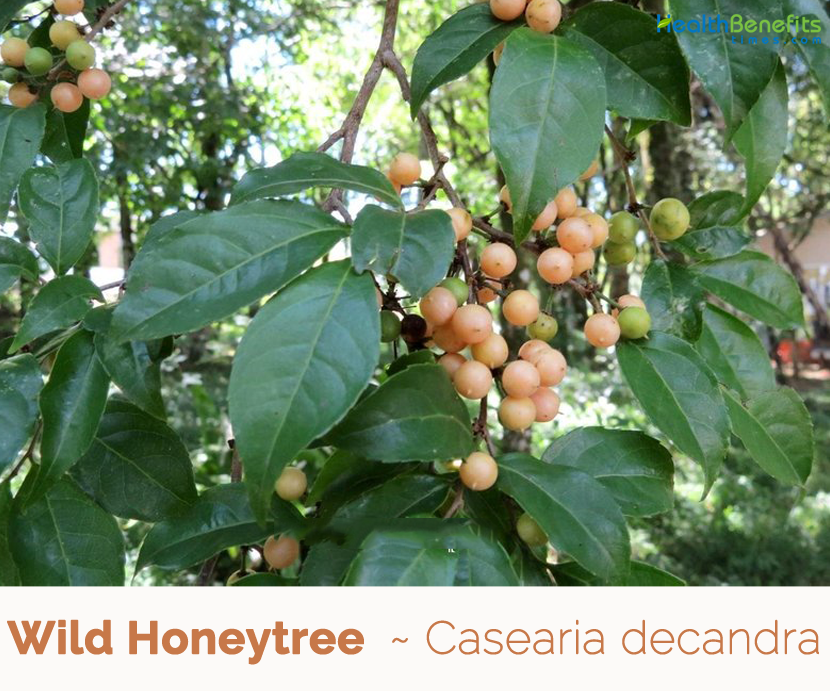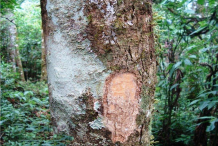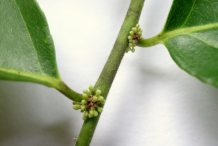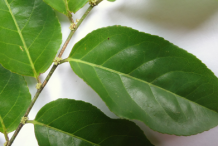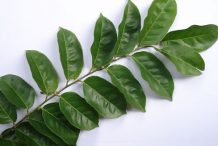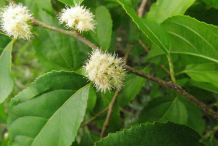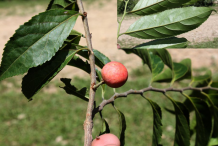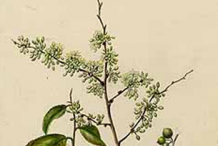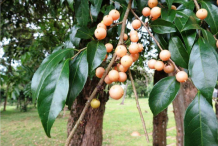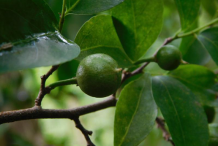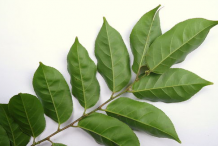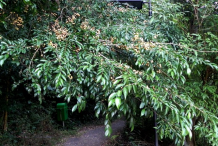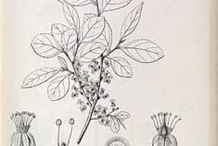| Wild Honeytree Quick Facts |
| Name: |
Wild Honeytree |
| Scientific Name: |
Casearia decandra |
| Origin |
Tropical regions from the West Indies and Honduras in Central America south to Bolivia, Paraguay, and northern Argentina |
| Colors |
Green turning white to cream when ripe |
| Shapes |
Spherical capsules measuring 0.7–1 cm (0.3–0.4 in) in diameter |
| Flesh colors |
Orange red pulp |
| Taste |
Sweet |
Wild Honeytree scientifically known as Casearia decandra is actually a small, bushy, evergreen tree from the Flacourtiaceae (Flacourtia family). The plant is native to tropical regions from the West Indies and Honduras in Central America south to Bolivia, Paraguay, and northern Argentina. Few of the common names of the plant are biscuit wood, Guaçatumba, pipe wood, Bois jaune, Caracolillo, Coco-ravet, Corcho blanco, Cotorrerillo, Guia mansa, Jaune d’oeuf, Jumbieapple, Palo Blanco, Wild Cherry, white cork, gentle guide and white stick. The edible fruit is gathered from the wild and consumed locally, but is not widely appreciated. The tree is also sometimes cultivated for its edible fruit.
Plant description
Wild Honeytree is a small, bushy, evergreen tree that grows about 4–6 m (13–20 ft.) tall with an open, elongate crown. The plant is found growing in various types of forest, including coastal, dry land forest and Araucaria forest. It is also found in open, disturbed areas such as pastures and road margins. The plant adapts to any type of soil, but it grows better on red, moist and organic-rich soils. The trunk is unique and measures 8 to 40 cm diameter, gray in color, with an elongated and dense crown of at most 3 meters of diameter. The branches are slightly covered with hairs (puberulent) at the apex and glabrescent (without hairs) at the base, which turns brown and has lenticels (a protrusion of cells that effect gas exchange) sparse.
Leaves
Leaves have subtle stipules, 3-5 mm long, glabrous or nearly, deciduous, petiole 3-6 mm long, glabrous. It is elliptic to ovate-elliptic, 3-10 x 1.5-5 cm, apiculate to acuminate at the apex, acute to obtuse and occasionally slightly asymmetric at the base, with translucent streaks and points spaced across the surface, membranous to chartaceous, of margin serrulado, light green and glabra in both surfaces except for domacios in the armpits of the nerves in the envés, the rib promínula in the envés.
Inflorescence and flowers
Flowers in axillary fascicles, usually sprouting on defoliated twigs. Pedicel is 3-5 mm long, articulated near the base, puberulum. Sepals are 5, oblong-lanceolate, concrescent at the base, 2.5-3 x 1-1.5 mm, acute at the apex, reflexes, and white to cream, puberulous on both sides. Petals are absent. Stamens are 10, 2-3.5 mm long, white to cream; staminodes 10, shorter than the stamens and alternating with these, villous, white. Ovary is ovoid, greenish or whitish, hairy, indivisible style, ± 1.5 mm long, whitish, stigma capitated and yellowish.
Fruits and Seeds
Fruits are globose capsule, 6-10 mm in diameter, usually with the persistent style, dehiscent by 3 leaflets, green turning white to cream when ripe, glabrescent. Seeds are 2-4, ± ovoid, 5-7 mm long, cream-colored, smooth, wrapped in an orange mass.
History
The plant is native to tropical regions from the West Indies and Honduras in Central America south to Bolivia, Paraguay, and northern Argentina. Occasionally it is cultivated but generally rare outside its natural range. The tree requires a tropical or warm subtropical climate without frosts.
Culinary Uses
- Ripe, sweet fruits are usually eaten out of hand.
- The fruit is rarely seen in markets but mainly picked offthe tree and consumed fresh.
Other facts
- The light brown wood is moderately heavy, hard, straight-grained and with a fine texture.
- It is not very durable, especially when exposed to the weather.
- It is used for making light utensils, toys and boxes.
- Wood is used for fuel and to make charcoal.
- Plant provides nectar for many different insect species, including honey bees and butterflies.
- Hard wood is occasionally used for fence posts.
- Plant begins to bear fruit with 4-5 years after planting.
References:
https://www.itis.gov/servlet/SingleRpt/SingleRpt?search_topic=TSN&search_value=501312#null
https://plants.usda.gov/core/profile?symbol=cade11
http://www.theplantlist.org/tpl/record/tro-13200436
Comments
comments


